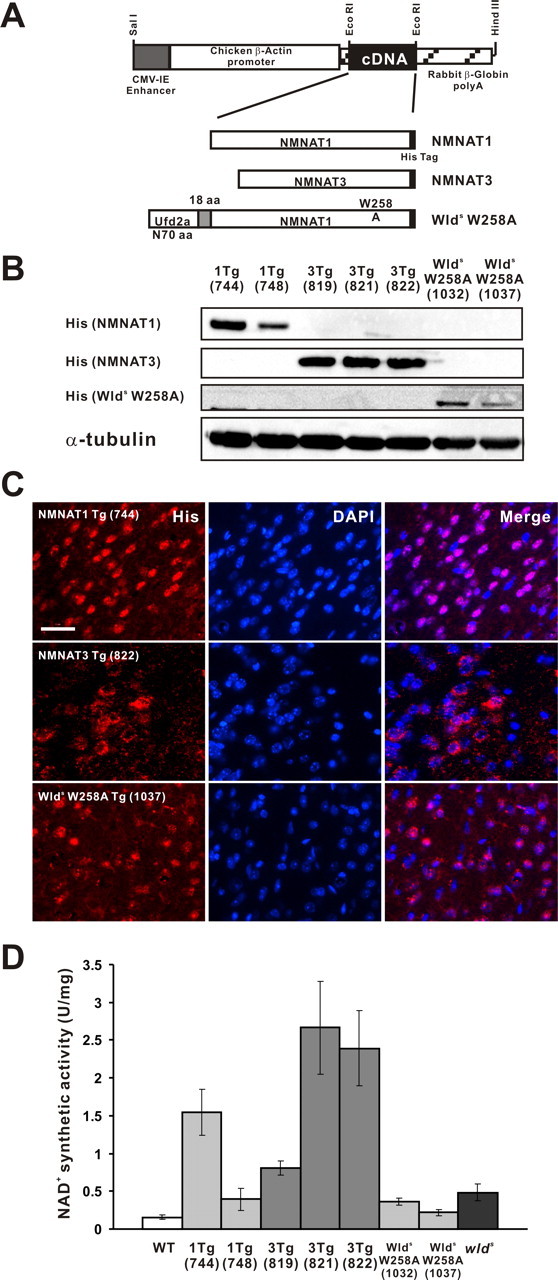Figure 1.

Generation of transgenic mice overexpressing NMNAT1, NMNAT3, and Wlds(W258A). The three transgenic mouse lines were generated using a vector containing CAG promoter. A schematic construction map is presented in A. Transgene-derived proteins were designed to be tagged with hexahistidine. Their expression was confirmed by immunoblot analysis (B) or by immunohistochemistry on cerebral cortex sections (C) using an antibody against His tag. α-Tubulin served as a loading control in B. Note that the majority of cells, including neurons, expressed transgene-derived proteins for all constructs. Scale bar, 50 μm. D, Differential expression of NAD-synthesizing activity observed in NMNAT1-Tg, NMNAT3-Tg, Wlds(W258A)-Tg, and wlds mice. NMNAT enzymatic activity was evaluated by the rate of NAD synthesis in transgenic mice cerebrum lysate. One unit of activity is defined as the amount of protein that catalyzes the synthesis of 1 mmol of NAD per hour. Error bars indicate SD.
